100 years ago, the Jasper Park Golf Club teed up its first round of the Royal and Ancient Game
In 1457, King James II of England banned golf in Scotland to prevent soldiers from skipping out on archery practice.
What should have ended there was revived 50 years later by his grandson, King James IV—poor with a bow and arrow, but an avid golfer—reinvigorating a sport that has ruined many a good walk since.
Four-hundred and sixty-five years later, and 4,000 miles to the west of Scotland, it was clear to many that Jasper had little to offer eager travellers beyond spectacular views, abundant wildlife, and fantastic water sports.
Not much of an archer, Sir Arthur Conon Doyle—an itinerant Alberta visitor, keen golfer, and writer of 60 Sherlock Holmes novels and short stories—suggested that placing nine holes near Pyramid Lake would be an excellent way for Jasper travellers to pass the time.
Unsure of the idea, Jasper managers turned to Banff expertise, bringing William Thomson, the Banff golf course pro, north for confirmation. Banff blessed the idea but selected an area only large enough for nine rocky holes, adjacent to Lac Beauvert, for the location. Work began in 1922, but progress was slow.
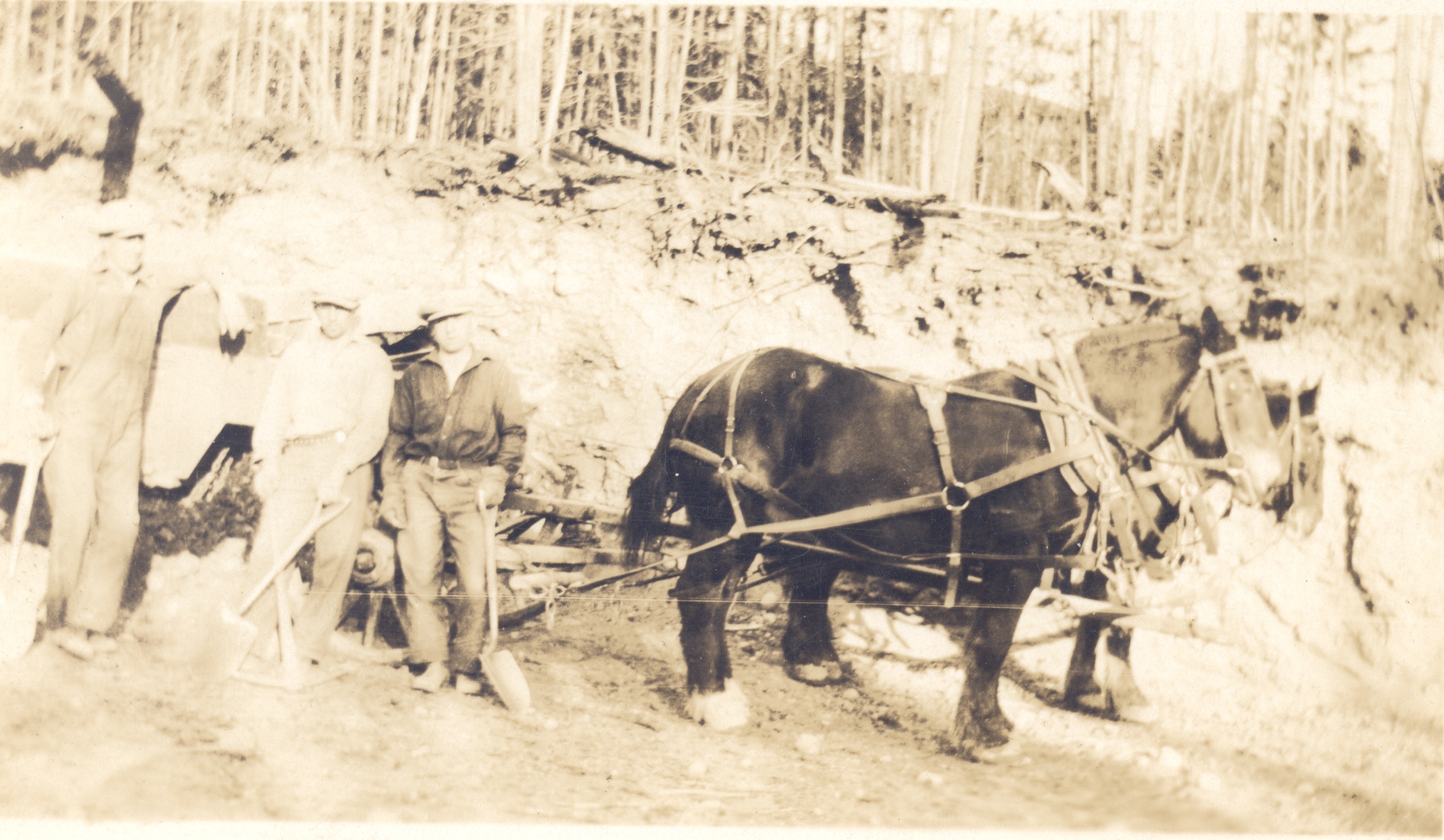
Enter Sir Henry Thornton, Canadian National Railway President and well-connected knight of the British Empire. He convinced the Canadian government to play through the Banff proposal, and get serious about golf in Jasper. By parliamentary decree, enough money was raised to hire Stanely Thompson, celebrated golf course designer, and bring in a quarter-section of the finest topsoil that Stony Plain had to offer to Jasper to finish the job.
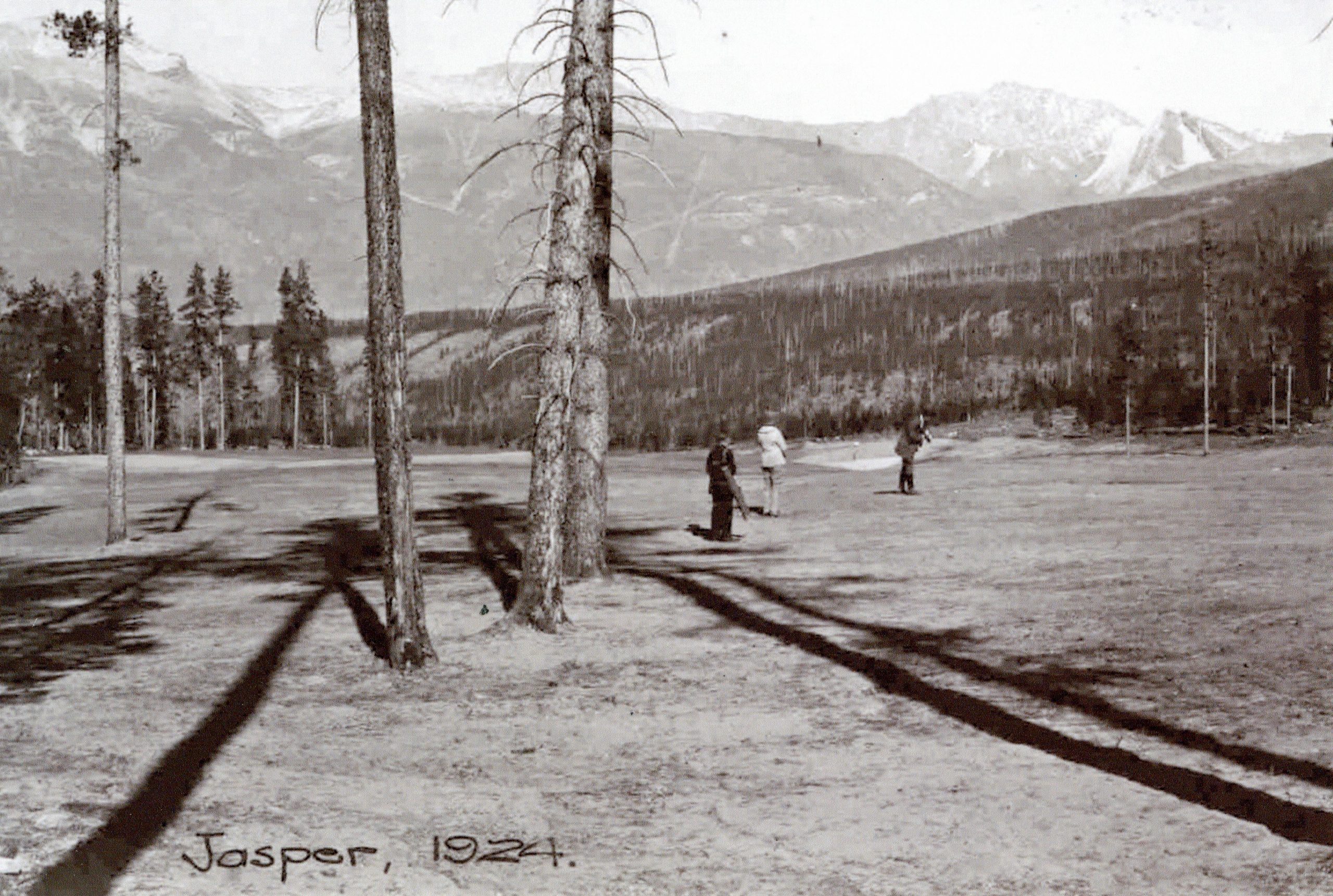
Enough land for 18 holes was cleared in 1924, and in 1925, 100 years ago this year, the first golf ball was shanked into Lac Beauvert from the 14th tee.
As visitation to Jasper grew through the 30s and 40s, the JPCG grew in popularity and reputation. Like for so many of us, JPGC experienced its golden era in its 20s. The post-war years at JPGC were, to say the least, storied, and I would suggest that the responsibility for this falls squarely on the broad shoulders of the club pro of the time. Who better to shepherd in a golden era than a man named Goldy?
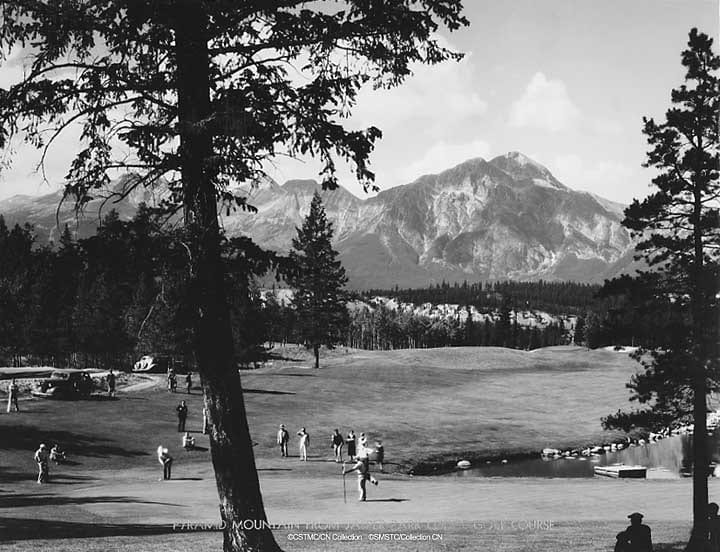
Leroy “Goldy” Goldsworthy, born in Minnesota, but raised in Edmonton, a life-long seasonal Jasper resident, was the JPGC pro from 1947–1952, and the stuff of sporting legend. Of course he was an excellent golfer, inspiring the likes of Bing Crosby, with whom he maintained a life-long friendship and golf companionship. He reportedly gave Dinah Shore her first golf lesson—the same Dinah Shore, American singer and actress, who went on to kick-start pro women’s golf in the USA.
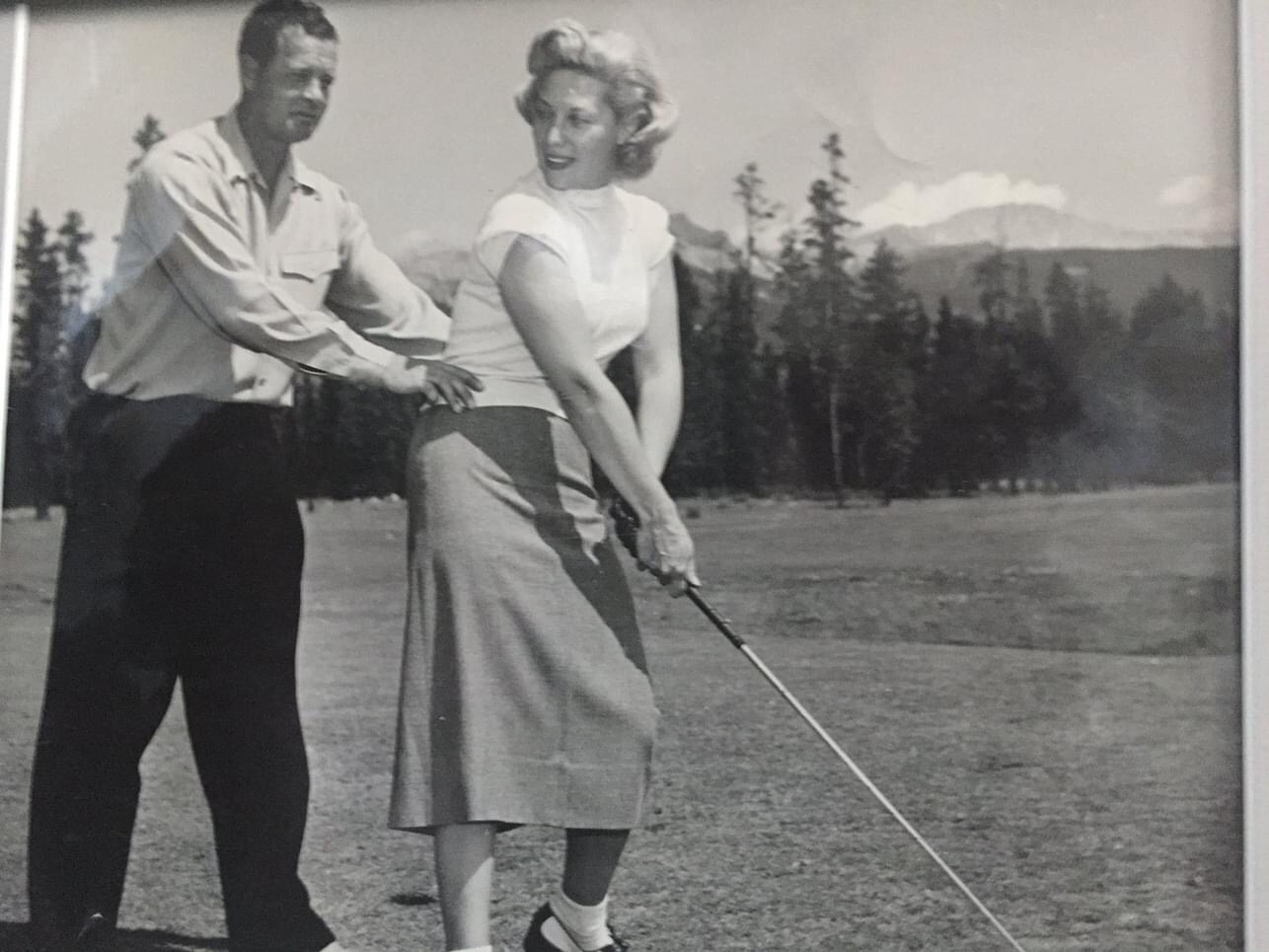
But Goldy was much more than golf. Sure, he played pro baseball, but as an Edmonton kid, Goldy’s first sporting love was hockey. Almost casually, as I spoke with Goldy’s grandson, Ross, I learned that Goldy won “the Cup.” He broke into the NHL as a 23-year-old with the New York Rangers, playing only one game in his first season. But Leroy quickly became a starter. The dream of every Canadian kid, he lifted Lord Stanley’s mug in 1934 with the Chicago Blackhawks, continuing to play as a pro for another 10 years, retiring in 1944 with the USHL in Dallas. After he retired from playing, Goldy continued in the sport for another seven years, enjoying even more success as a coach.
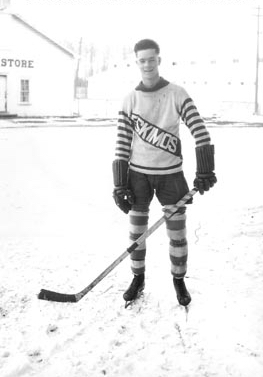
All through his hockey career, Goldy spent his summers in Jasper, a regular on the golf course, and impressing the management at JPL sufficiently to become the pro in 1947. He held that position officially for 12 years, and unofficially until his death in 1980. His love of sport, his warm, confident manner, and his skill at teaching golf, helped propel the Jasper Park Golf Course to international recognition and popularity in an era when golf was experiencing a meteoric rise.
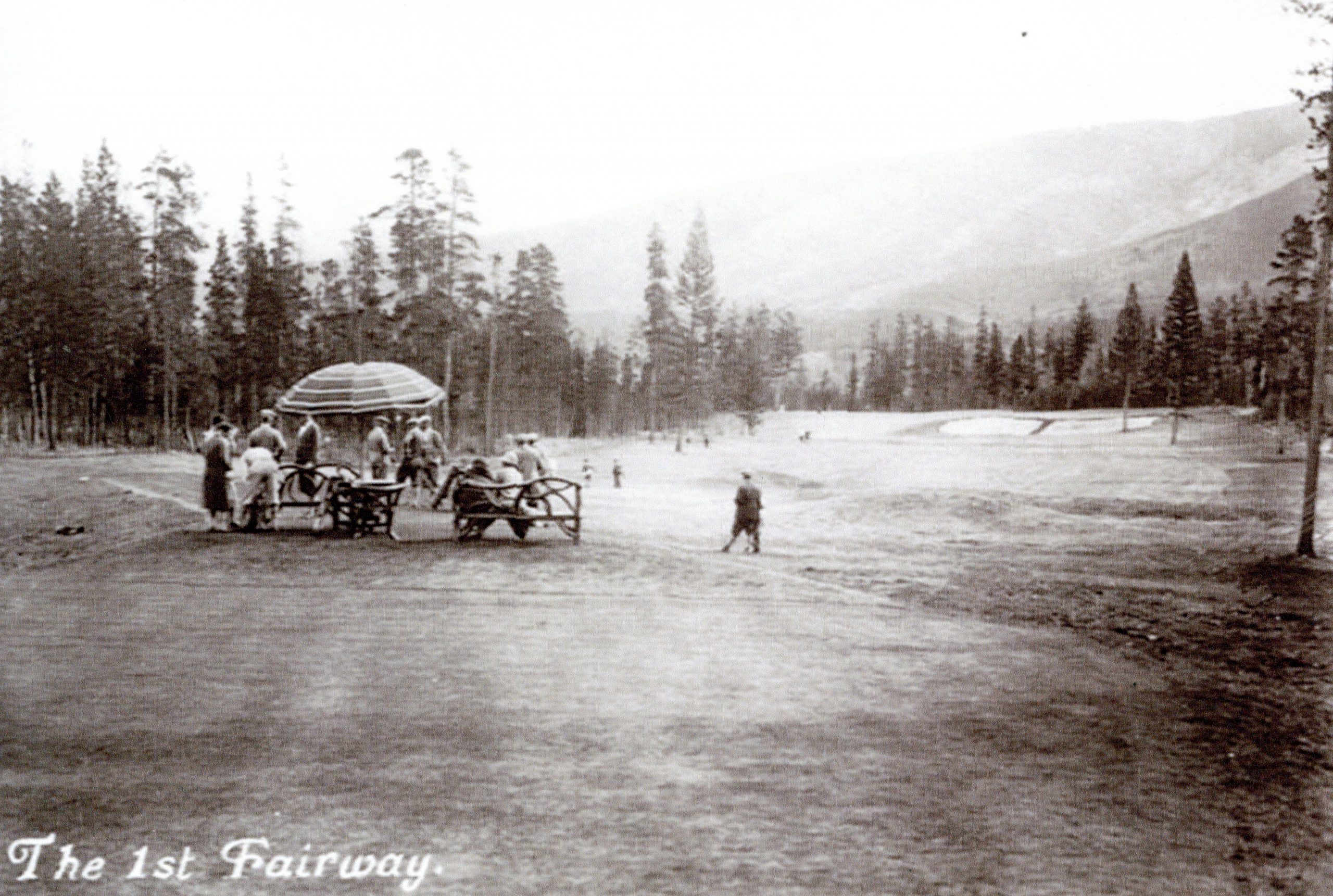
Too meteoric, perhaps, for many local duffers. Shortly after Goldy gave up his formal role at JPGC in 1960, 50 Jasper residents formed an official society, the Jasper Park Golf Club, to create a better deal for resident ball-chasers. They negotiated advanced access to mid-week tee times and local rates on green fees.
The Lake Edith Golf Club also formed to seek similar deals for summer occupants of Lac Beauvert’s neighbourhood loch. The pure volume of ink that has been spilled in Jasper’s newspapers about the activities of these groups for the last 65 years is testament to their energy and place in our community that continues today.
Indeed, several times in Jasper’s golfing history, the Park has been petitioned to create a second course to improve access to the sport. In 1977, a petition was made to then Superintendent, Rory Flannigan, to carve 18 holes out of the woods along the Snaring Road.
And again, in 1987, when the Palisades Centre lost its role as the national training centre for Parks Canada Wardens, a group of Jasper golf enthusiasts made a pitch to turn it into a golf course with low financial barriers, and preferential access to juniors, seniors, CN employees, and folks new to the game.
Both proposals were rebuffed by Parks Canada, perhaps in the interest of improving local archery skills. Official government dispatches suggest otherwise—vague references to management plan priorities abound—but one never knows.
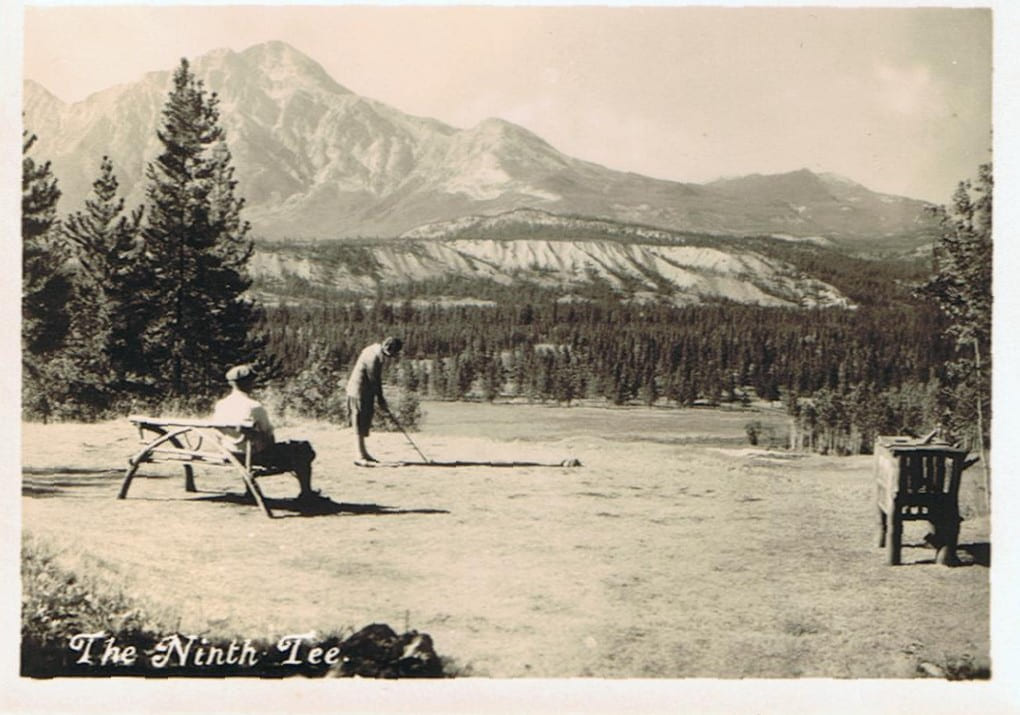
What has never been questioned over this past century of golf in Jasper is the quality of play that the course has provided. Stanely Thompson’s original design is legendary. Much has been written about its subtle virtues to not have to repeat them here, and the staff at JPL have been hard at work to restore them following the extensive damage that it suffered during last summer’s wildfire.
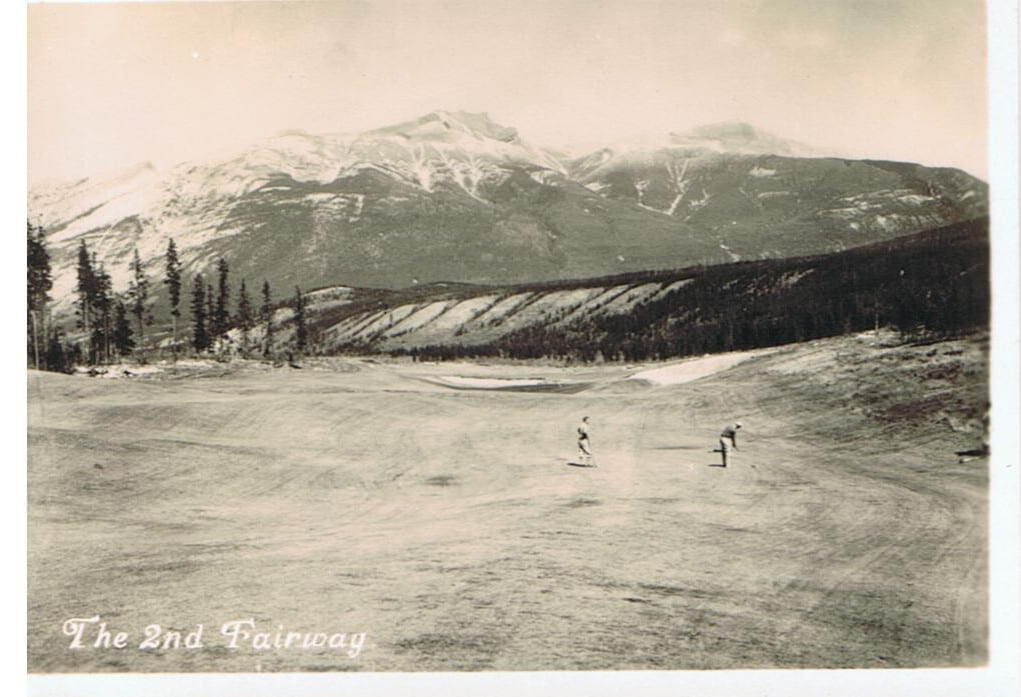
Celebrations are well underway to mark the centenary of the Jasper Park Golf Course, and on July 1 this year, barring further decrees from the current King of England, the course will re-open to the public.
John Wilmshurst // info@thejasperlocal.com


